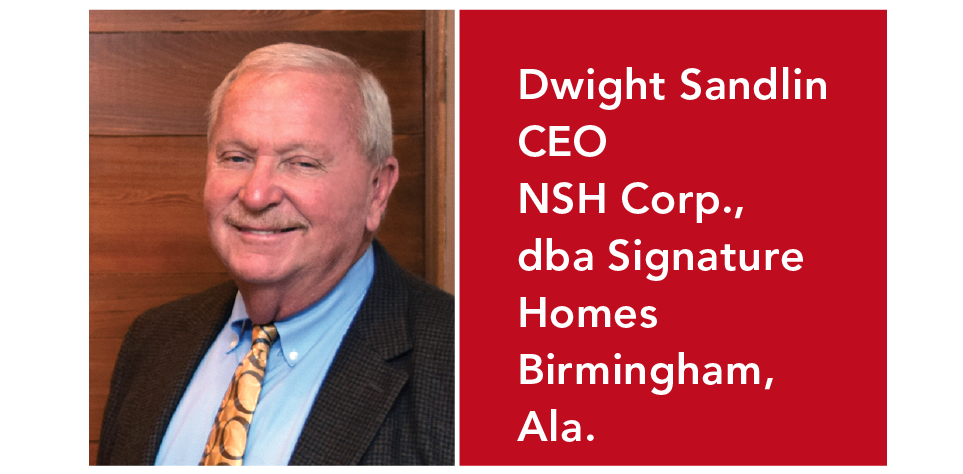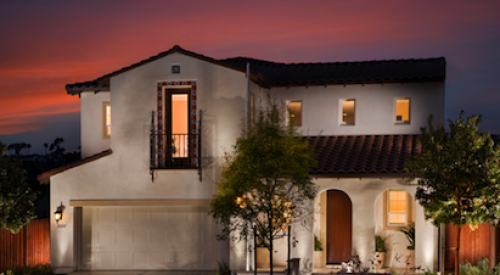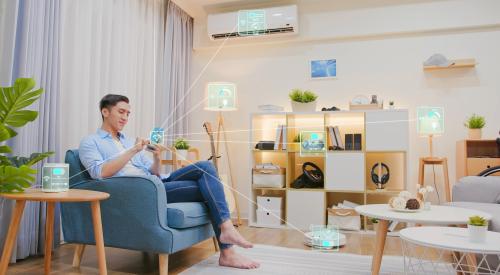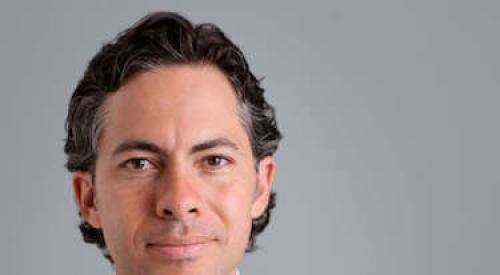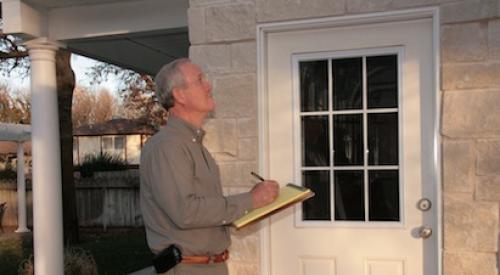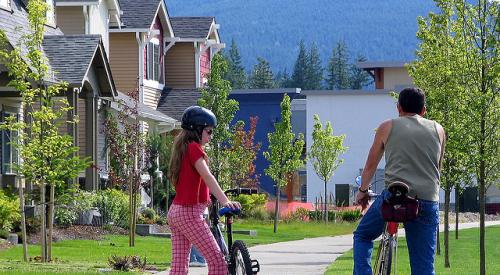When utility company Alabama Power approached Signature Homes to build a Smart Neighborhood to demonstrate what residential construction could look like 20 years from now, Signature’s CEO Dwight Sandlin initially thought the project was beyond his company’s abilities. For one, the utility wanted the homes to have a Home Energy Rating System (HERS) score in the mid-40s. Though Sandlin thought that was probably impossible, he signed on anyway.
Last May, Signature sold out Reynolds Landing at Ross Bridge, in suburban Birmingham, Ala., a neighborhood of 62 single-family homes with R-23 walls and R-49 attics, triple-pane windows, and yes, an average HERS score of 46. In addition, much of the community’s power comes from a 5-acre microgrid made up of solar panels, battery storage, and a backup natural gas generator. The Smart Neighborhood integrates high-performance homes, energy-efficient systems and appliances, connected devices, and a microgrid on a communitywide scale for the first time in the Southeast.
Q: How did the company take on this steep learning curved?
A: We have a long-term relationship with Alabama Power; it’s a pretty good one. When we started, I told them we don’t have this capacity. You’re talking about stuff that we don’t know how to do. You’re going to have to have all your consultants talk with us and make us smart, so we can have some real ability to discuss these things as opposed to us trying to do it ourselves. Even if I decided to do this on my own, I would have approached it the same way because the learning curve is very steep.
Alabama Power had two guys, one with a background in HVAC and the other guy who was a project engineer. They had all of the developments needed to make 45 HERS put into the design, and then they were in the field the whole time. They had the HVAC laid out and executed the engineering. If you’re going to do a project like this, you have to hire somebody who really understands that part because most builders don’t.
After the first blower-door test, they, and we, had to learn on the fly how to caulk the switch plates and other things, so we could achieve zero airflow. There were other things we had to change like how to put HVAC in our attics and change how we insulate under the HVAC. We were excited about the Smart Community before we started. We realized we had a steep learning curve and had to depend on our partners. The opportunity to learn so much from one project was why we embarked on the journey.
Q: What is the Smart Neighborhood?
A: Alabama Power wanted to create a new concept they called “Smart Neighborhood.” They also solicited several partners including Oak Ridge Laboratory, Vivint, Rheem, Samsung, Carrier, and even the Department of Energy. Their mission was to create a community that would meet the government’s energy standards in the future. They wanted a living research laboratory to help them determine how energy may be used in the future. Alabama Power is staying in contact with our customers to get feedback on the home and more detail about their concept of energy savings.
The building envelope includes 2x6 exterior walls, [Huber Engineered Woods’] Zip system sheathing, and radiant barrier roof decking. The BIBS [blow-in blanket system] insulation creates R-23 walls and there is R-49 fiberglass in the ceiling. The homes also include triple-glazed low-E windows with argon gas; Rheem 80-gallon hybrid water heaters; whole-house LED lighting; a whole-house ERV [energy recovery ventilator]; and Carrier’s 20 SEER Infinity air conditioner with Greenspeed technology. As part of the plan, they bought a 10-acre site on which they put a microgrid sized to create the energy this community of 62 homes would need.
The homes are very interactive with all smart appliances that can be run by a smartphone. This included keyless exterior front door lock, all appliances, heat pump water heater, HVAC, washer and dryer, and a refrigerator with a camera inside to view what groceries they needed to pick up when away from home. The system is connected to Site Sage circuit level monitoring [from Powerhouse Dynamics], so the customer can know not only how much energy they are using but also how much each appliance is using. The HVAC was a Carrier Green speed with infinity controls that show the humidity level in the home.
Q: As far as marketing, what are Reynolds Landing buyers responding to? Was it the convenience that connectivity brings? Was it lower utility bills?
A: We marketed the community as a “digitally connected and energy efficient home.” What we found was that our customers were more interested in the connectivity rather than the energy efficiency as
Birmingham’s energy cost is very low compared with many other parts of the country, and we do not have long cold winters.
While “green” and “energy efficiency” are the buzzwords in the industry, we found almost all folks who were told that our homes averaged a HERs rating of 46 did not know if that was good or bad. We have offered energy-efficient product for years with very few takers because it was not a hot button in our markets.
(Alabama Power) gave us the specs for the Smart Neighborhood, which was $15,000 more than what it costs us to build now, and the payback was over 10 years. We’re selling to a fairly young market so a 10-year payback is not that interesting. Our market is professionals. Ninety percent of our sales are college graduates and 40 percent are postgraduates. In those markets, they’re concerned about staying cool but not necessarily about energy. So if it comes down to do I put in more hardwood floors or a more efficient energy system, we sell hardwood floors.
Q: Are there any takeaways from Reynolds Landing that could be used in future Signature Homes?
A: What we’re doing this in our next neighborhood now, is offering different levels of energy efficiency. No one knows what a HERs is, so instead what we say here is here is how much (energy efficiency features) costs and here is the payback period.
What we learned was that each customer has unique expectations about energy efficiency. So we established the specific cost to upgrade to various energy efficient systems. We convey that in plain English to the customer by giving them the number of years it takes to recoup the cost. For example, a young couple who knows they will move in two or three years is not interested in an upgrade that takes five years to recoup. But the customer who expects to stay for a long time may pay more for efficiency with a longer time for payback.
Customers enjoy the lower energy cost, but they’re talking about the smart stuff. The smart stuff is not that expensive. You can make a house smart today for $3,000 or $4,000 and we’re putting a lot of that tech in the showroom for our next models. So we learned a lot about what to do and what not do.
Some customers want more bells and whistles than other customers. By marketing with assorted options for energy savings and interconnectivity, we create more value for our customer.
Q: What are the smart features your customers are picking?
A: Not the refrigerator. It’s an expensive Samsung. People thought it was cute but just cute. We don’t even offer it anymore. The value of having smart door locks, a smart hub, and irrigation system (one that automatically ties to weather report so it activates only on dry days and reports a running monthly total of water usage), stuff that really works. That smart HVAC, you can pull it up on your phone and see what temperature is and set the temperature. Something that regulates the temperature of the water is not such a big deal.
So we are putting things in that people are talking about. It’s nice to have Alexa turn the house lights on and off, but that is just OK. The real things people like are the remote door, just being able to look and see if your garage door is down when you’re away from home. The aspect of having video so you can see who comes to your front door.
We hoped Smart Neighborhood would help us screen the smart stuff. It gave us the ability to do real-time testing on this. We’re really excited about this because we are offering more new products and they are products that don’t require a hub anymore. You just sync it with your phone to a plug. You don’t have to hard wire anything. By the time you hardwire anything and use it for a year, it’s old.
Q: Does Signature use clients’ ideas to tweak house plans?
A: One other unique position we take at Signature is we change our plans fairly frequently. We’ll introduce a new plan in our community each year, which easily means 10 to 12 new plans each year. This is not efficient in the leveraging overhead as done by most publics. However, we build about 600 homes per year which is small enough to tweak plans but big enough to attract vendors. Many of our ideas come from our customers.
Q: What's next for Signature?
A: There is a great deal of talk in the industry about how to become more efficient with technology. While there has been no new technological changes in the construction of homes, there has been a lot of IT changes that make us more efficient operationally such as computerized schedules, standardization, interconnectivity, and create real-time information that allows management to react quickly. However, we perceive most builders have instituted these items so they do not give us a unique strength over our competitors.
We think that our best opportunity is to enhance the building experience for the customers. We are constantly asking our customers what frustrates them during the process. Quality is not a sales tool; it is an expectation. If we delight customers during the building process, they will give us referrals. Today our company averages about a 50 percent referral rate. We think this is the only real metric that tells us if we are doing well. Our goal is to listen to the customer more and enhance their experience with us. Our goal is to constantly improve our referral rate.
